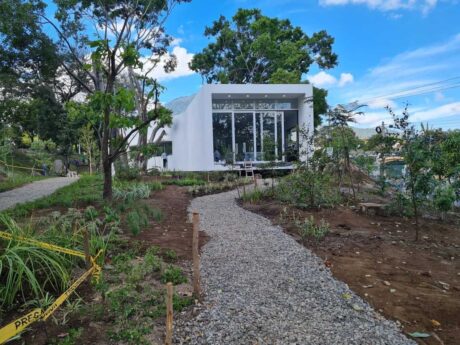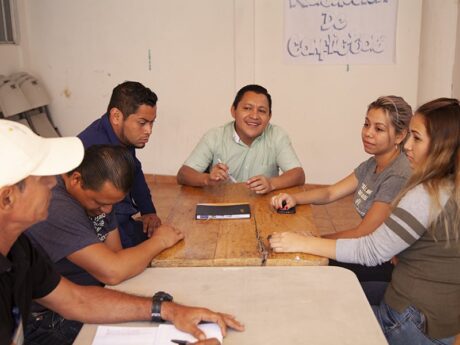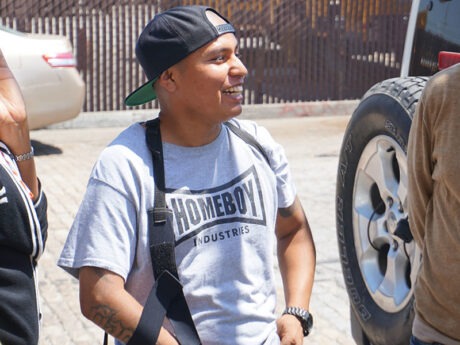À l'intérieur de la stratégie collective pour prévenir la violence au Salvador.
Alexis de la O Romero, 15, serre la main avec son professeur et heurte les poings avec un ami avant de glisser dans un bureau à l'école et de tirer son cahier et ses crayons de son sac à dos. Il maintient ses devoirs et est attentif à la leçon. Mais il n'y a pas si longtemps, Il vous dira, C'était une personne différente.
«J'étais toujours dans la rue. Je n'écouterais pas ma famille. Je n'irais pas en classe," dit-il.
En cojutepeque, une ville aussi renommée pour ses taux de criminalité que pour son chorizo de renommée mondiale, Ces comportements peuvent être un indicateur de risque de s'engager avec l'écosystème local des gangs et de la violence. Alexis concerné tomberait dans le même schéma que tant d'autres jeunes à Cojutepeque, Un enseignant l'a référé à un programme de conseil familial, partie de la Projet de prévention du crime et de la violence au Salvador.
Le projet, qui est financé par l'USAID et mis en œuvre par Creative, évalué Alexis - et 1,040 Autres jeunes - à son niveau de risque en utilisant une méthode connue sous le nom d'outil d'éligibilité des services aux jeunes. L'outil évalue les risques pour les jeunes à travers l'individu, domaines au niveau des pairs et de la famille utilisant une série de neuf facteurs de risque, comme un événement de vie critique, toxicomanie et influence négative des pairs.
Du plus de 1,000 Jeunes Le projet a évalué dans ce cycle, 142, y compris Alexis, Facteurs affichés les plaçant à haut risque de violence, appelé risque de niveau secondaire. De ce groupe, 105 a opté dans le programme de prévention de la violence secondaire.
Au cours de 18 mois, Alexis et sa famille ont travaillé en partenariat étroit avec un conseiller familial qualifié pour résoudre les problèmes, Changer la dynamique familiale négative et les facteurs de risque plus faibles pour rejoindre un groupe violent. Après les six premiers mois, 92 pour cent de ces 105 jeunesse, y compris Alexis, pas plus démontré quatre facteurs de risque ou plus, Les placer en dessous du seuil de risque de comportement violent ou de rejoindre des gangs - un service aux jeunes, leurs familles et leurs communautés.
"C'est beaucoup d'aide, les deux pour eux [la jeunesse] Et pour nous les parents et, en outre, pour l'environnement familial et même avec des voisins,"Dit le père d'Alexis, Víctor Manuel Marroquín.
Il dit que la relation de son fils et lui ont changé alors qu'ils travaillaient ensemble pour résoudre les problèmes au sein de la famille et de ceux que son fils a confrontés. Alexis est devenu plus ouvert avec sa famille, Et son comportement à l'extérieur de la maison s'est également amélioré.
«Je me battais toujours dans les combats. Je manquerais de respect aux professeurs,»Dit Alexis de son passé. «Mais le programme m'a aidé à comprendre que cela n'allait pas me faire entrer n'importe où. Bien, J'y ai pensé et j'ai commencé à aller en classe. Je prêterais plus d'attention à mes professeurs. Je ne les manquerais plus. Je me suis calmé.
Comme il pense aux possibilités de son avenir, Il est reconnaissant d'avoir reçu les outils et la possibilité de changer.
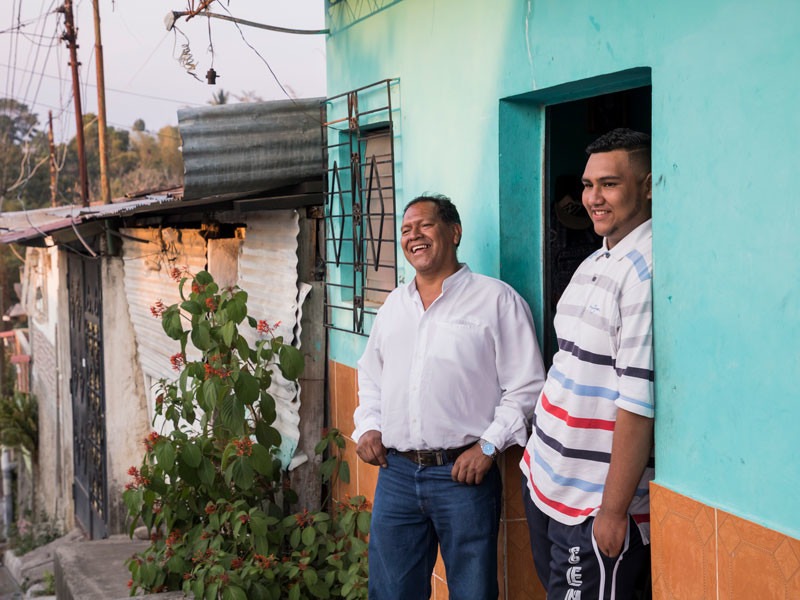
"Si je n'avais pas rejoint le programme, Je ne sais pas où je serais maintenant," dit-il.
Mais imaginer où il peut aller et ce qu'il peut réaliser est de devenir plus facile à mesure que sa communauté subit également une transformation - grâce à la récupération des espaces publics, Collecte de données sur le crime qui rend les rues plus sécurisées, Compétences et emplois pour les jeunes, et des mesures innovantes pour atteindre les jeunes comme lui.
Diagnostiquer le problème, Se concentrer sur les points chauds
Alors que des jeunes comme Alexis travaillent dans leur propre maison pour renforcer la résilience à la violence, Des communautés comme la cojutépeque prennent des mesures dans les rues, informé par l'amélioration de l'accès aux données de la criminalité.
Tirer des informations sur la criminalité d'un éventail d'acteurs comme la police, hôpitaux et écoles, l'Observatoire municipal de la criminalité et de la violence de Cojutepeque identifie des modèles d'activités violentes qui peuvent et ont aidé la municipalité à prendre des mesures pratiques pour que les familles puissent s'aventurer dehors, les enfants peuvent marcher jusqu'à l'école et les vendeurs peuvent vendre leurs produits dans des environnements plus sécurisés. Avec des détails sur les types de crimes, armes utilisées, temps, emplacement et plus, les municipalités ont mis en œuvre des mesures, notamment en postant davantage de policiers dans les endroits où les vols sont plus probables ou en installant un éclairage pour éclairer les rues..
L'observatoire est un élément essentiel d'un effort en plusieurs parties à Cojutepeque et 54 autre haute- et communes à risque moyen, de l'animation de San Salvador à la côte de Conchagua, mettre toutes les mains et toutes les ressources sur le pont pour réduire la criminalité et la violence et élargir les opportunités pour les résidents.
Deux philosophies en tandem guident ces efforts Projec de prévention de la criminalité et de la violencet pour créer ce qui est connu comme un lieu, approche de santé publique.
Voir la violence comme un risque de santé publique un peu comme une maladie, Le projet utilise des données pour définir et diagnostiquer le problème, identifier et évaluer les niveaux de risque de comportement violent, mettre en œuvre un traitement ou des interventions et évaluer les résultats. Pour interrompre la propagation de la violence, Le projet se concentre sur les jeunes à trois niveaux de risque - la population générale vivant dans une zone dangereuse, ceux qui sont les plus à risque de participer à la violence, Comme Alexis, et les délinquants juvéniles sur la voie de la réadaptation et de la réintégration.
Et en ciblant les points chauds stratégiques de la violence comme Cojutepeque, Le projet peut réduire plus efficacement la violence à l'échelle nationale à partir du niveau local. Il rassemble les citoyens, gouvernement national et responsables de la ville, police, jeunesse, le secteur privé et les médias.
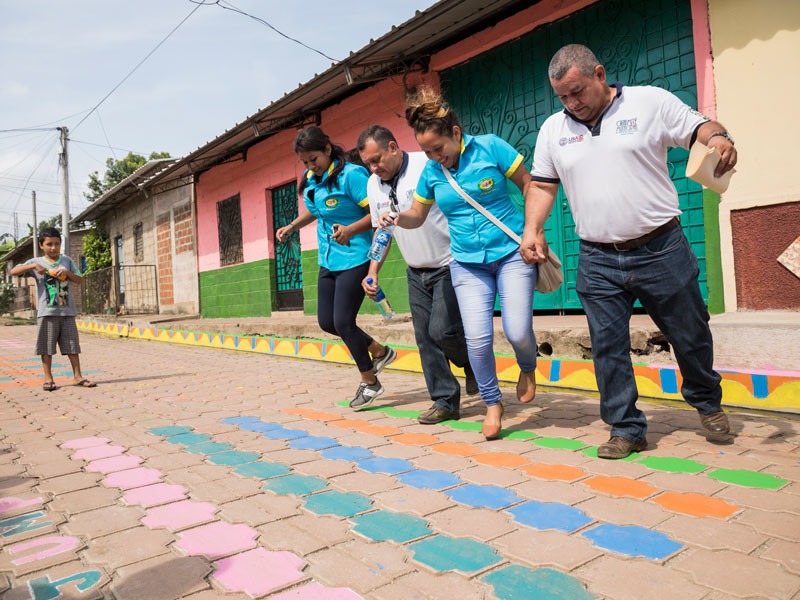
«La violence sévère liée aux gangs marque profondément la vie quotidienne en cojutépée semi-rurale,"Dit Javier Calvo, Chef d'équipe du projet. «Pour traiter plus efficacement la violence, Nous pensons que nos efforts doivent être enracinés dans une stratégie à plusieurs niveaux et fondée sur des preuves qui favorise l'engagement de la communauté ascendante, où le grand public peut travailler avec la police, Les dirigeants locaux et autres parties prenantes pour développer collectivement des stratégies pour réduire les facteurs de risque et augmenter la résilience et la cohésion sociale. »
Basé sur les besoins d'une municipalité, Le projet aide les dirigeants locaux à déployer une combinaison de son plus que 40 Outils de prévention dans le cadre de six stratégies interactives qui traitent de tout, du manque d'emplois à une capacité locale limitée pour suivre et prévenir la criminalité.
Maintenant dans sa sixième année, plus que 98,600 Les Salvadorans ont participé à des initiatives de projet, y compris 1,444 jeune musicienS jouant dans la philharmonique du quartier au lieu de passer du temps inactif dans les rues; plus que 29,200 les jeunes bénéficiaires et 1,700 Des bénévoles qui gardaient le bourdonnement des centres de sensibilisation du quartier; et 1,558 membres des comités municipaux de la prévention des crimes et de la violence dirigeant les initiatives de sécurité communautaire.
Des espaces sûrs qui aident à transformer les communautés
Un jour donné, en cojutepeque et municipalités à travers le pays, 166 Les centres de sensibilisation du quartier sont animés. Enfants, Les adolescents et les jeunes adultes jouent à des matchs de football, Pratiquez leurs compétences en anglais, suivre des cours de compétences de vie, Répétez les routines avec leurs clubs de danse ou traînez simplement. Quelques 32,000 Les jeunes assistent à ces centres à l'échelle nationale.
Qu'est-ce qui est remarquable dans ces scènes? Dans de nombreux cas, Avant l'arrivée du centre de sensibilisation, ou Centro de Alcance en espagnol, Les jeunes de ces quartiers n'avaient pas un endroit sécurisé pour jouer, socialiser après l'école et passer leur temps de manière productive. L'alternative est les rues, où les futurs sont incertains et la violence est toujours un risque.
Dans le cadre de leur participation aux centres, Les jeunes tracent leurs rêves et leurs objectifs pour la vie et cartographier les voies pour les atteindre, Dépannage avec les mentors pour surmonter les obstacles en cours de route. Volontaires du quartier, Souvent les jeunes eux-mêmes, Gardez les activités du centre en vie.
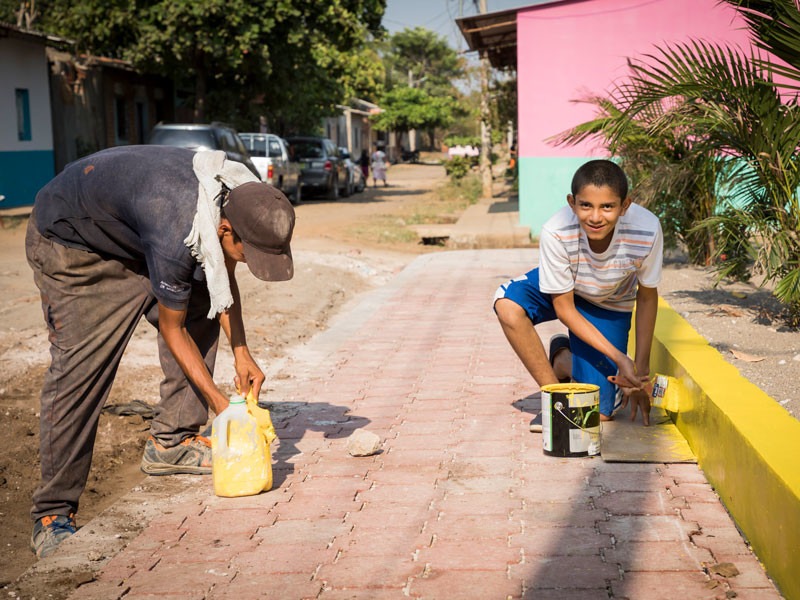
Ces volontaires du Centre de sensibilisation sont également essentiels pour les projets et les municipalités Projets de récupération d'espace public qui ont transformé des lots abandonnés en terrains de football et des rues désolées en voies colorées pour les marchés et célébrations communautaires. À ce jour, les communautés du pays ont inauguré 64 de tels projets, et un supplément 41 sont en préparation dans huit municipalités.
Magdalena Magaña, qui dirige les initiatives de récupération des espaces publics du projet à travers le pays, dit que ce grand nombre de projets est un point culminant des collaborations à l'échelle de la ville.
"À la fin, Nous travaillons tous pour créer et générer les conditions et les espaces de loisirs sains et pour générer des sourires chez chacun des enfants de la communauté," dit-elle.
Elle dit aux bénévoles que bien que ces projets aient un travail acharné, ils en valent la peine, alors les jeunes de la communauté, les familles et les habitants peuvent se réapproprier une partie de leur ville et être fiers de ce qu'ils ont construit ensemble.
Une compétence, chèque de paie et voie à suivre
Entre-temps, alors que les enfants et les jeunes passent du temps libre dans les centres de sensibilisation et les parcs publics récemment ouverts, le projet contribue également à élargir les opportunités économiques pour les jeunes adultes dans ces zones durement touchées.
Jorge Jonathan Mendoza Ramos, 28, est l'un d'entre eux.
Lors de son premier jour de cours de réparation de climatisation, il examine des outils inconnus, des tubes et des fluides qu'il étudiera et manipulera au cours des prochaines semaines. Au chômage et désireux de démarrer une entreprise avec des amis, Mendoza s'est inscrit à ce cours au Centre Municipal de Formation Professionnelle de Cojutepeque, connu sous son acronyme espagnol FORMATE.
Même si ce n'est que son premier jour, Mendoza a hâte de se mettre au travail et de maîtriser les compétences qui l'aideront à façonner son avenir.
« Nous avons déjà beaucoup de connaissances. Nous avons commencé à apprendre les nouveaux outils et les différents types de climatiseurs," dit-il. "Je pense que dans un an, Je pourrai me rappeler que c’était le début d’une entreprise que nous voulons et aurons.
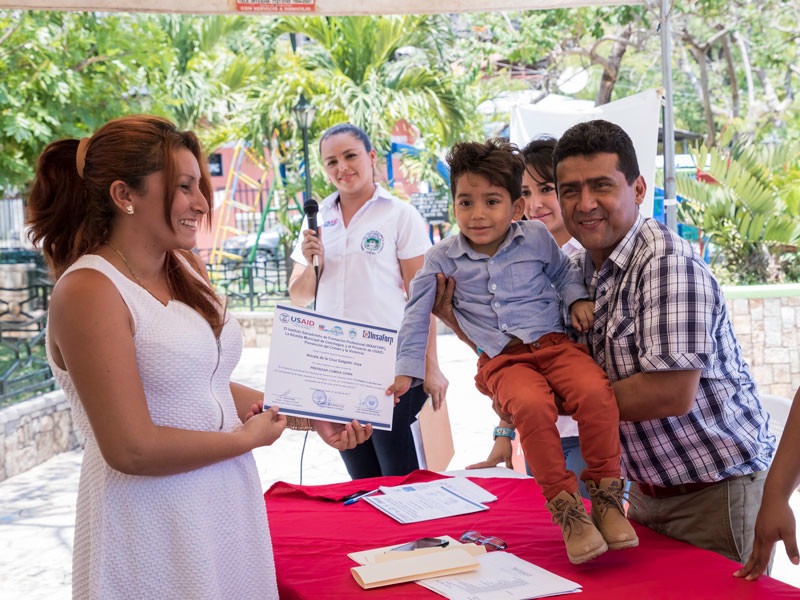
Son optimisme est étayé par des chiffres. Depuis leur création en 2015, le 16 Les centres municipaux de formation professionnelle lancés avec le soutien du projet ont obtenu leur diplôme 92 pourcentage des inscrits.
Pendant que Mendoza étudie la réparation de la climatisation, ses pairs à travers le pays obtiennent une certification en comment préparer une cuisine internationale, visites guidées, réparer des téléphones portables, installer le câblage électrique domestique et réparer les moteurs hors-bord des bateaux des secteurs de la pêche et du tourisme. En fournissant des compétences et des emplois, le projet offre une alternative positive aux jeunes vivant dans des zones où, en l'absence de ces opportunités, rejoindre un gang peut sembler un choix viable pour la sécurité économique.
En plus des centres FORMATE, le projet s'est associé à Microsoft pour lancer neuf Académies Microsoft Imagine où les jeunes acquièrent des compétences techniques recherchées et obtiennent des certifications Microsoft appréciées par les employeurs potentiels. Presque 1,450 la totalité des jeunes ont déjà obtenu des certifications, dont Jorge Fuentes, un étudiant universitaire de 24 ans.
Fuentes affirme que le programme fait bien plus que simplement ajouter une réalisation précieuse aux CV.
« Dans un endroit comme Cojutepeque, qui est classée parmi les communes les plus violentes, ces types d'opportunités nous donnent une perspective différente et nous font réaliser qu'il existe de nombreuses opportunités pour nous," dit-il. "Ce n'est pas qu'un cours, c’est quelque chose de précieux qui permet aussi de nouer des amitiés et qui nous permet de rencontrer des personnes de différents domaines et d’élargir notre réflexion.
Lorsque les jeunes obtiennent leur diplôme d'un centre FORMATE ou Microsoft, animateurs de l’Unité municipale d’emploi gérée par la ville, formés grâce au projet, sont prêts à passer à l'action. Ils aident les diplômés à rédiger leur curriculum vitae, rencontrer des représentants de l'entreprise et préparer les entretiens. À ce jour, plus que 1,000 les jeunes de tout le pays ont obtenu un emploi grâce aux unités.
Prévention de la violence menée par la communauté
Alors que le projet de prévention du crime et de la violence entre dans sa dernière année, elle travaille à assurer la poursuite de ses initiatives grâce à des partenariats avec les gouvernements municipaux, groupes de la société civile et organisations à but non lucratif. Il recherche également des approches uniques pour prévenir la violence et créer des opportunités pour les jeunes à risque..
"Actuellement, le projet concentre son attention sur la promotion de modèles innovants pour la prévention du crime et de la violence, du conseil familial à la prévention tertiaire de la violence avec une grande variété d'organisations et d'entités sociales," dit Karen Duarte, Coordonnateur du volet subventions innovantes du projet.
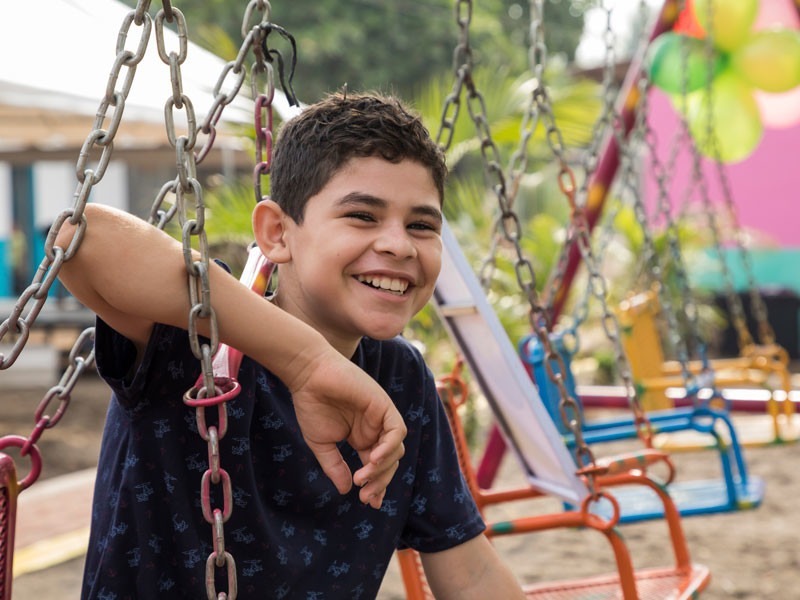
Grâce à des partenariats et des subventions, le projet soutient des initiatives comme SoyAutor ("Je suis un auteur"), Donner aux jeunes à risque l'occasion de raconter leurs propres histoires en écrivant, et usine de citoyens («Citizen Factory»), qui soutient la réadaptation et la réintégration sociale pour les jeunes qui ont eu des ennuis avec la loi, aux prises avec la toxicomanie, ou a été récemment expulsé des États-Unis.
Avec des loisirs, Formation de la main-d'œuvre et opportunités sociales pour les jeunes, La renaissance des espaces publics et de nouveaux outils pour les municipalités et les forces de l'ordre, Les municipalités comme Cojutepeque deviennent plus résilientes dans un pays qui a encore l'un des taux d'homicide les plus élevés au monde.
Pour Alexis, Le conseil familial du projet l'a aidé à commencer à rêver grand: Il espère devenir médecin ou pilote un jour. Alexis dit qu'il encouragerait ses pairs à chercher des opportunités similaires pour faire un changement positif dans leur vie et dans leurs communautés.
«Juste comment ça m'a fait changer, ça peut changer tellement plus de personnes," dit-il. "Alors ne vous détournez pas d'opportunités comme celle-ci, Parce que c'est une très bonne chose. "
Avec des rapports d'El Salvador par Marta Maldonado et Amanda Smallwood et l'édition de Gerson Lara et Evelyn Rupert.
